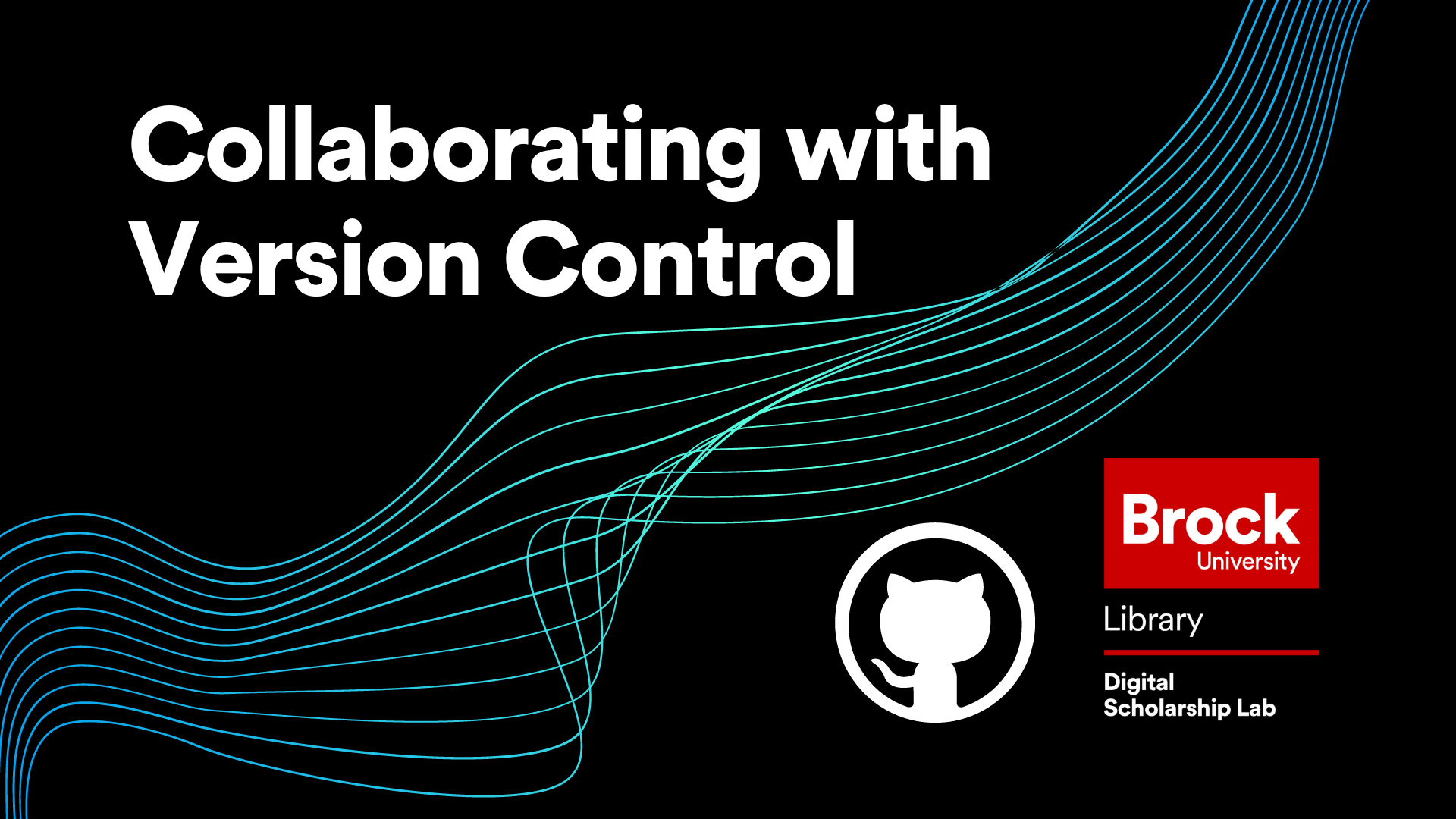
Collaborating with Version Control on GitHub
In this workshop, attendees will learn about the different ways that GitHub can be used to collaborate on projects including organizations, collaborators, issues, forking, and pull requests. This workshop is the second in the GitHub Workshop Series offered by the Brock University Digital Scholarship Lab.
A basic understanding of using repositories in GitHub is recommended for this workshop.
Estimated workshop length: 1.5 hours
Setup
In preparation for this workshop, you will need the following:
- A GitHub account which you can get by clicking the “Sign Up” button at the top right of https://github.com/.
- GitHub Desktop which can be acquired at https://desktop.github.com/. Keep in mind that if you are not using a personal computer for this workshop, you may need to contact your IT department for permission to install new software.
- A GitHub repository with at least one file that you can edit in it. Even a brand new repository with just a README file will do.
Workshop Tasks
Task Set 1
- Open a repository in GitHub desktop either by using the “Code” button in your online repository or by opening GitHub desktop and navigating to it from the dropdown menu
- Check that the repository is up to date by “Fetching” the origin and pulling any changes if needed
- Open the repository in your file explorer and edit the repository in some way (editing the README file is easiest) then commit and push the change.
- Go to the History tab in GitHub desktop and revert the commit by right clicking it and selecting “Revert changes in this commit”
- Push the reverted commit to your online repository
- Once you have done this, type “COMMIT REVERTED!!!!” in the chat to let me know you are ready to move on
Task Set 2
- Navigate to the link in the chat and make a new issue under the “Issues” tab
- Once your issue has been submitted, fork the repository using the “Fork” button at the top right of the page
- Edit the README file in your forked branch of the repository and add your favorite animal under the question there then commit your change (remember to leave a nice commit message)
- Create a pull request (open the “Pull requests” tab and click the “New pull request” button) with a note saying you answered the question and submit the request
- Once you have done all that, type “REQUEST SENT!!!!” in the chat to let me know you are ready to move on
Next Steps
After completing this workshop, the recommended next steps are:
- Try working on something together with a friend or colleague. GitHub doesn’t just have to be for work! You can plan a party, store photos, or anything else you can think of! Just make sure to use private repositories for personal or sensitive information. Using the tool frequently will ensure you don’t forget the terminology and keep things fresh in your mind.
- Check out the other workshops in our introduction to GitHub Series
This workshop is brought to you by the Brock University Digital Scholarship Lab. For a listing of our upcoming workshops go to Experience BU if you are a Brock affiliate or Eventbrite page for external attendees.